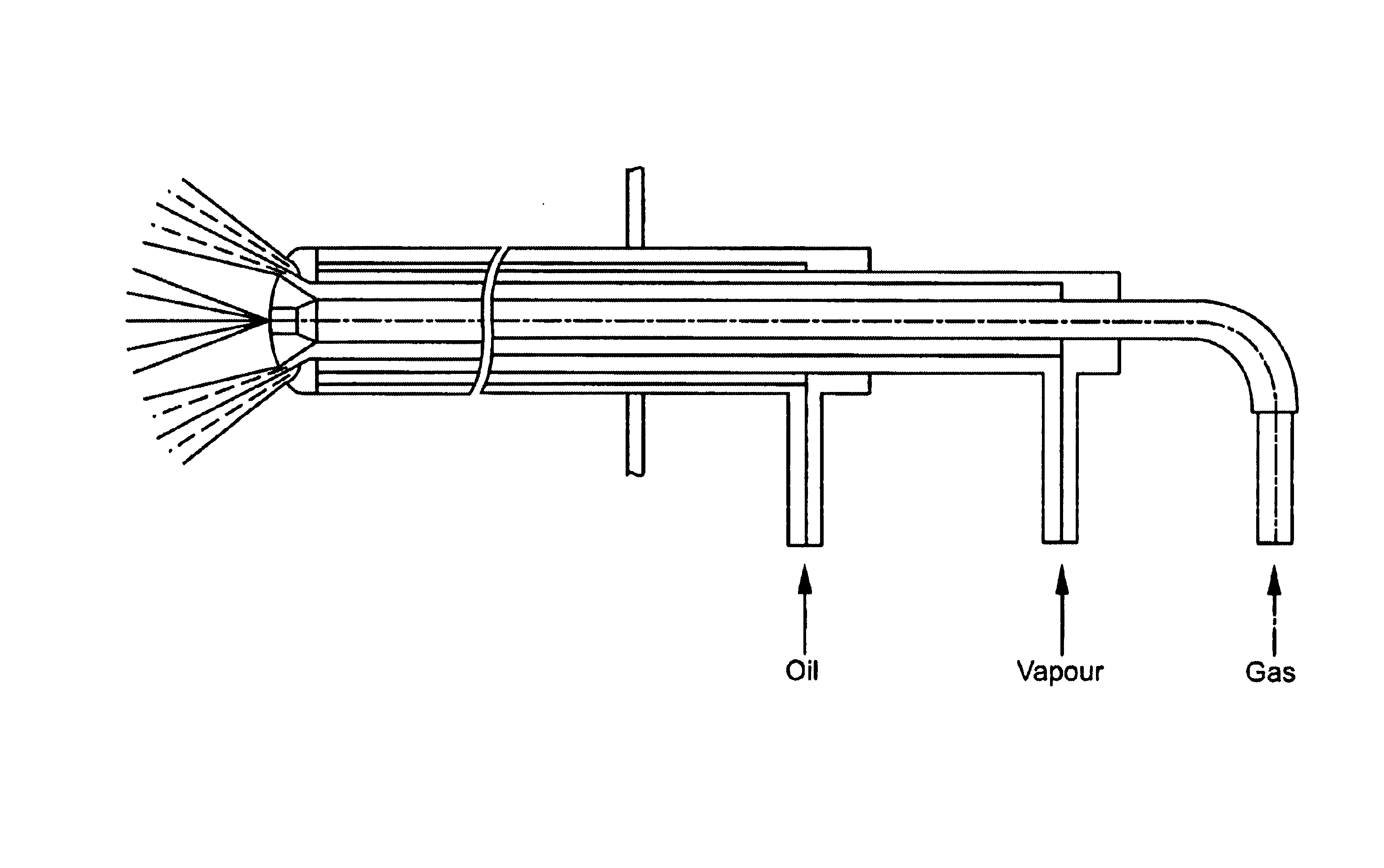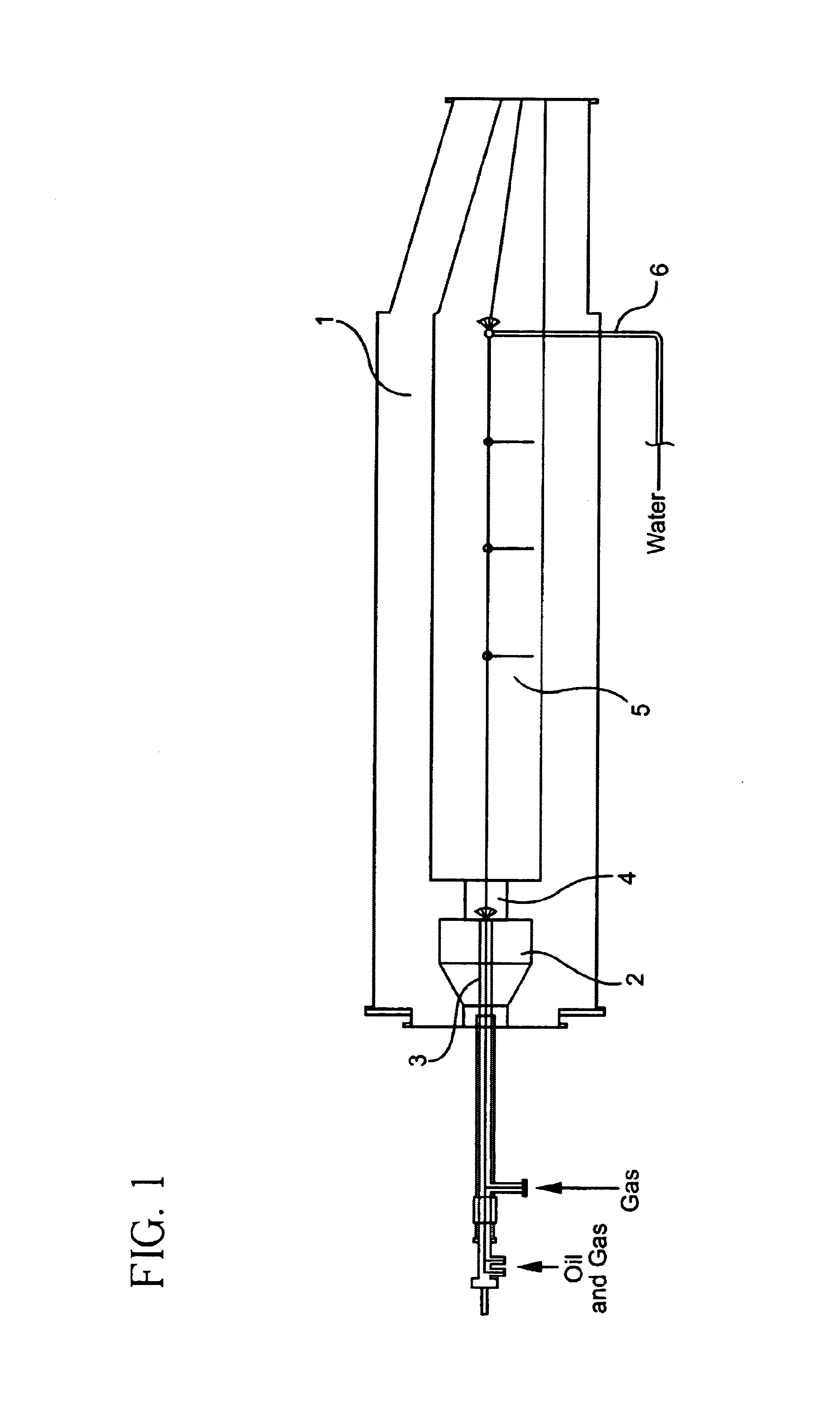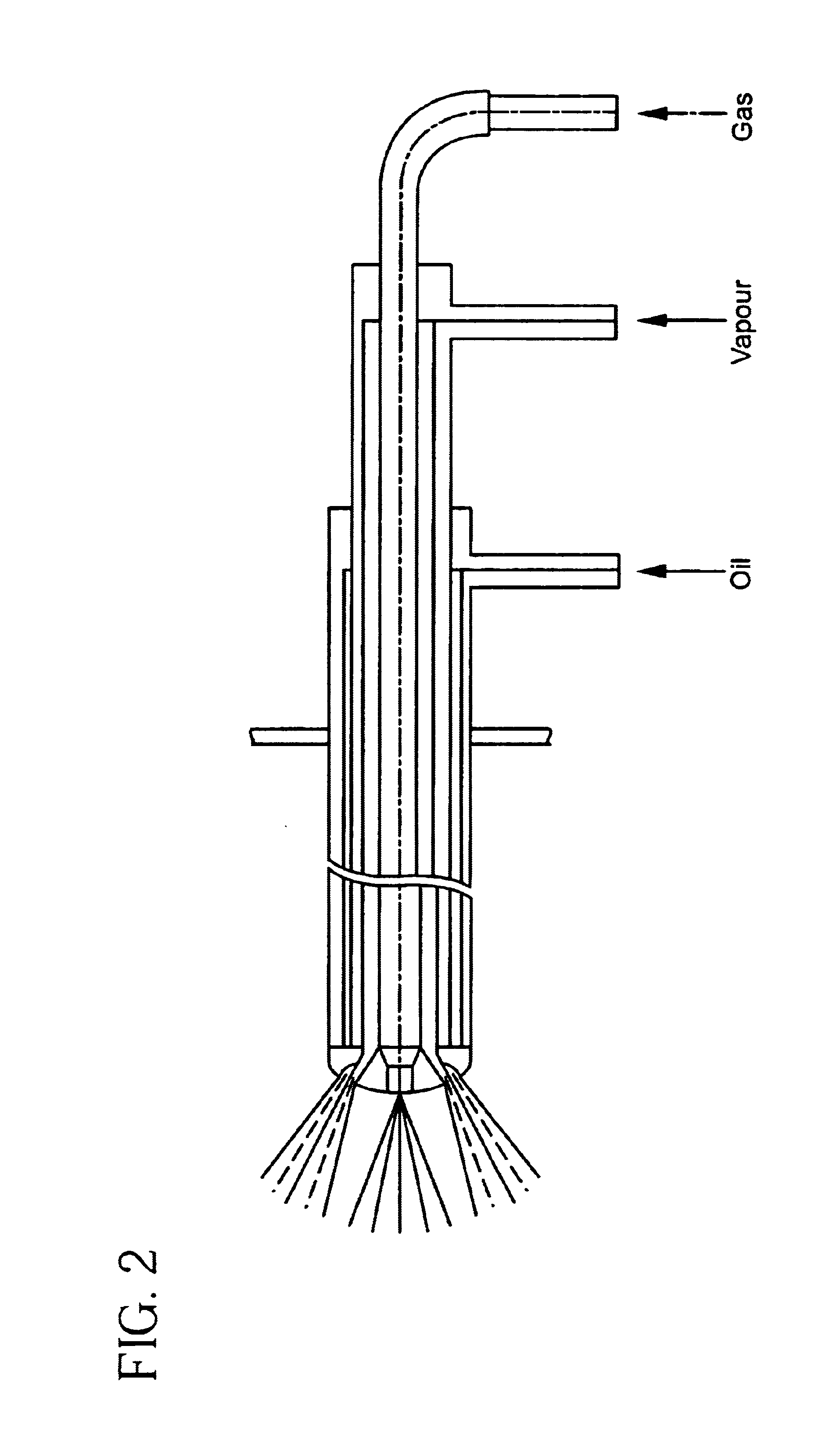Electrocatalyst for fuel cells
a fuel cell and electrocatalyst technology, applied in the field of electrocatalysts, can solve the problems of limited electrochemical output when used in fuel cells, and achieve the effect of reducing the cost of fuel cell us
- Summary
- Abstract
- Description
- Claims
- Application Information
AI Technical Summary
Benefits of technology
Problems solved by technology
Method used
Image
Examples
example 1
20.1 g carbon black B1 (moisture content 0.5 wt. %) are suspended in 2000 ml of completely desalinated water. After heating to 90.degree. C. and adjusting the pH to 9 with sodium bicarbonate, 5 g platinum in the form of hexachloroplatinic (IV) acid solution (25 wt. %Pt) are added, the suspension is brought to pH 9 again, reduction is carried out with 6.8 ml formaldehyde solution (37 wt. %) and, after filtration, the residue is washed with 2000 ml of completely desalinated water and dried at 80.degree. C. in vacuo for 16 h. The electrocatalyst obtained in this way has a platinum content of 20 wt. %.
example 2
A solution of 52.7 g hexachloroplatinic (IV) acid (25 wt. % Pt) and 48.4 g ruthenium (III) chloride solution (14 wt. % Ru) in 200 ml deionized water is added to a suspension of 80.4 g carbon black B1 (moisture content 0.5 wt. %) in 2000 ml completely desalinated water at room temperature, while stirring. The mixture is heated to 80.degree. C. and the pH is brought to 8.5 with sodium hydroxide solution. After addition of 27.2 ml of a formaldehyde solution (37 wt. %), the solid is filtered off and rinsed with 2000 ml of completely desalinated water and the moist filter cake is dried in a vacuum drying cabinet at 80.degree. C. An electrocatalyst which comprises 13.2 wt. % platinum and 6.8 wt. % ruthenium is obtained.
PUM
| Property | Measurement | Unit |
|---|---|---|
| temperatures | aaaaa | aaaaa |
| temperatures | aaaaa | aaaaa |
| temperatures | aaaaa | aaaaa |
Abstract
Description
Claims
Application Information
 Login to View More
Login to View More - R&D
- Intellectual Property
- Life Sciences
- Materials
- Tech Scout
- Unparalleled Data Quality
- Higher Quality Content
- 60% Fewer Hallucinations
Browse by: Latest US Patents, China's latest patents, Technical Efficacy Thesaurus, Application Domain, Technology Topic, Popular Technical Reports.
© 2025 PatSnap. All rights reserved.Legal|Privacy policy|Modern Slavery Act Transparency Statement|Sitemap|About US| Contact US: help@patsnap.com



